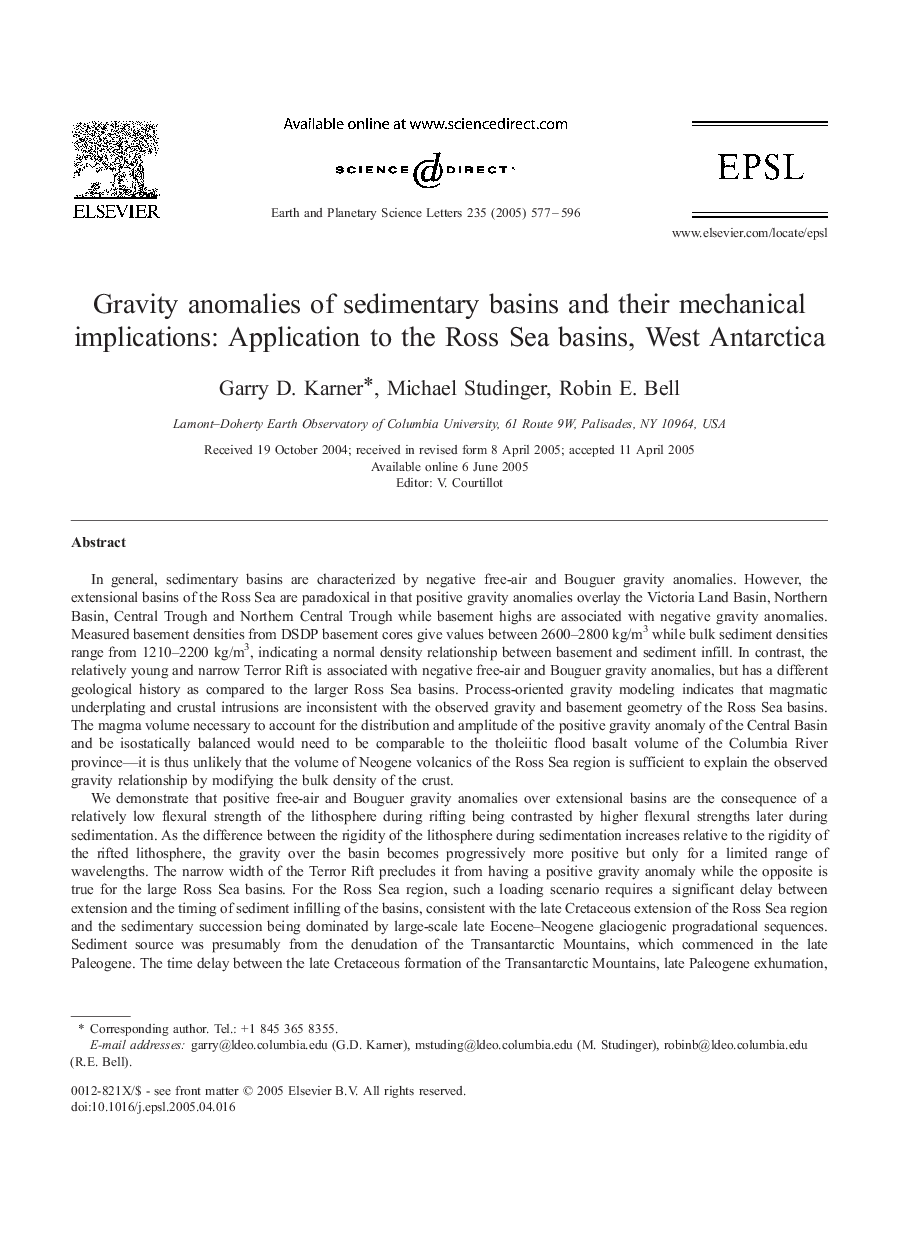| Article ID | Journal | Published Year | Pages | File Type |
|---|---|---|---|---|
| 9522212 | Earth and Planetary Science Letters | 2005 | 20 Pages |
Abstract
We demonstrate that positive free-air and Bouguer gravity anomalies over extensional basins are the consequence of a relatively low flexural strength of the lithosphere during rifting being contrasted by higher flexural strengths later during sedimentation. As the difference between the rigidity of the lithosphere during sedimentation increases relative to the rigidity of the rifted lithosphere, the gravity over the basin becomes progressively more positive but only for a limited range of wavelengths. The narrow width of the Terror Rift precludes it from having a positive gravity anomaly while the opposite is true for the large Ross Sea basins. For the Ross Sea region, such a loading scenario requires a significant delay between extension and the timing of sediment infilling of the basins, consistent with the late Cretaceous extension of the Ross Sea region and the sedimentary succession being dominated by large-scale late Eocene-Neogene glaciogenic progradational sequences. Sediment source was presumably from the denudation of the Transantarctic Mountains, which commenced in the late Paleogene. The time delay between the late Cretaceous formation of the Transantarctic Mountains, late Paleogene exhumation, and the generation of significant Paleogene paleobathymetry requires either the Ross Sea region to be sub-aerial and sediment starved for most of the Paleogene and/or the Paleogene climate was ineffective in producing clastics until the onset of glaciation in the late Eocene-early Oligocene.
Related Topics
Physical Sciences and Engineering
Earth and Planetary Sciences
Earth and Planetary Sciences (General)
Authors
Garry D. Karner, Michael Studinger, Robin E. Bell,
